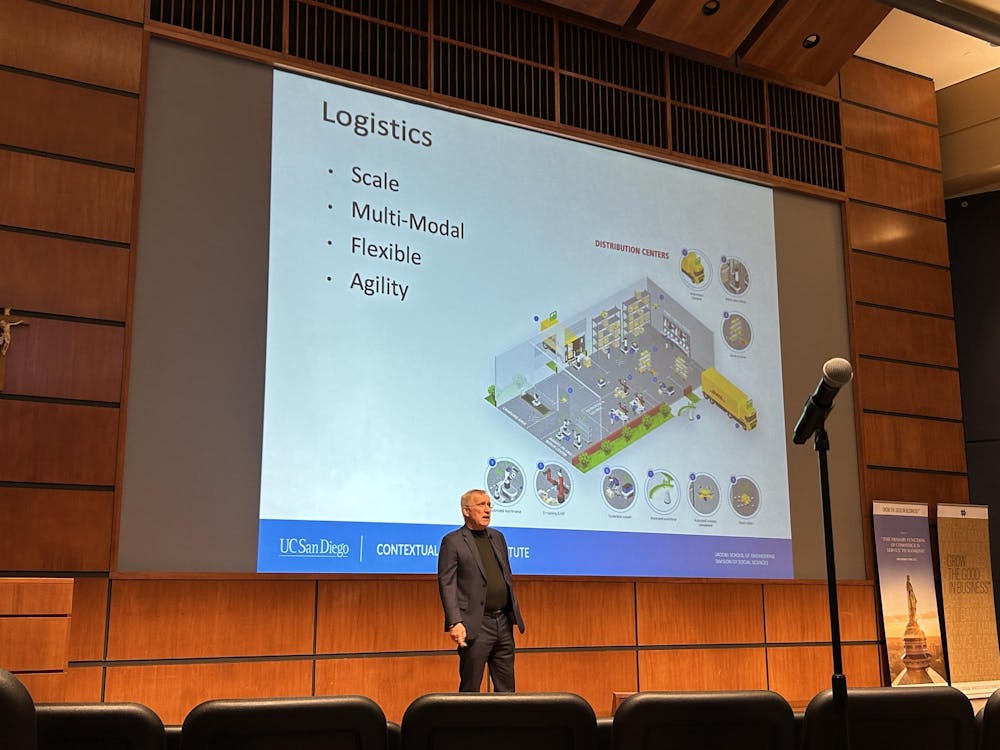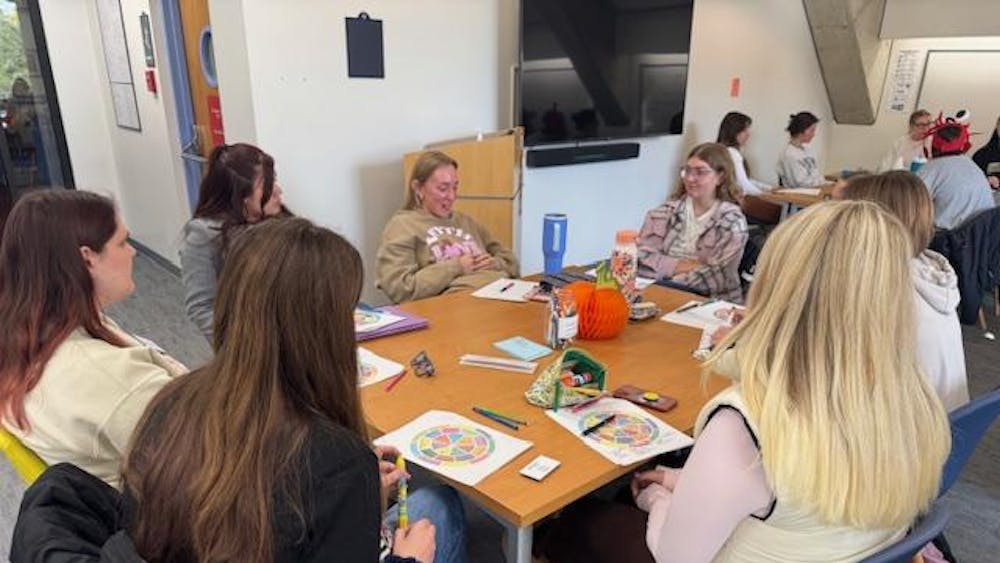On Friday, Henrik Christensen, director of the Contextual Robotics Institute and professor of computer science and engineering at the University of California, San Diego (UCSD), lectured on the development of autonomous vehicles for micro-mobility.
The talk is part of Mendoza College of Business’ Ten Years Hence speaker series that explores issues, ideas and trends that are likely to affect businesses and society for the next decade.
Christensen defines micro-mobility as traveling a short-moderate distance, typically ranging from zero to five miles. He said these short trips account for a staggering 60% of all travel in the United States. Medium-distance trips such as Uber and Lyft and long-distance trips such as Turo, a car-sharing company, account for 25% and 15% of the trips, respectively.
To test the implications of autonomous vehicles in the real world, Christensen and his team offer a free mailing service on the UCSD campus using golf cars renovated into autonomous vehicles.
According to Christensen, these tests highlighted the major challenge faced by autonomous vehicles: adapting to different situations. For example, at the intersection, the vehicle could not sense the hand-waving gesture of other drivers to signal that the vehicle should go first.
Christensen explained that the vehicle faced confusion when it encountered both a stop sign and a “slow down” sign held by road workers simultaneously, unable to determine which directive to obey. Other challenges include properly identifying pedestrian actions and safely interacting with them, handling unexpected driving conditions such as low light or inclement weather and ensuring that detecting other pedestrians ensures their privacy and security.
To tackle these issues, Christensen and his team developed sensor fusion that combines radar, camera and lidar — light and range detection systems — integrated into a software system that has various components independent of each other to build detailed maps and robust pedestrian detection systems. This builds a dynamic model of the world for autonomous vehicles for accurate mapping, robust pedestrian detection and reliable prediction of future events on the road, he explained.
Despite challenges, Christensen remains optimistic about the future of autonomous vehicles and their potential to revolutionize transportation and logistics.
“Buying a car is the worst decision you could make,” he said.










